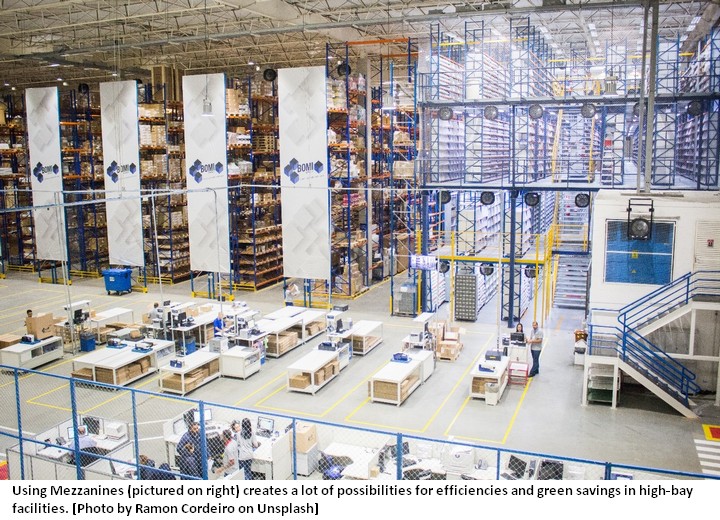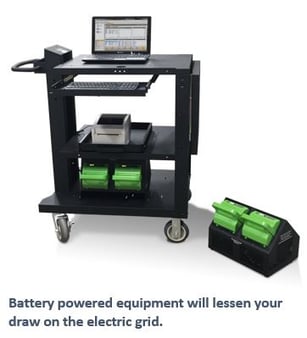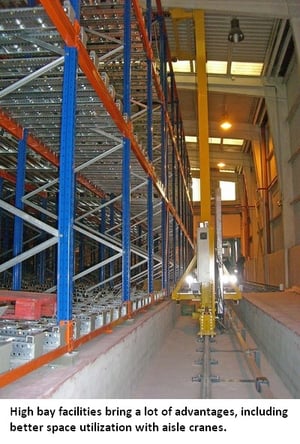
Twenty years ago, making a DC/warehouse “green” was almost universally a very low priority if it made the list of near or long-term goals at all. As the digital age was just starting to ramp itself up with the advent of e-commerce, managers were more focused on the building blocks needed to transform their facilities to raise the volume, speed and variety of services they perform. But while the last twenty years have been almost exclusively a race for adapting the business into a speedier, direct-to-customer version of it’s pre-internet self, prioritizing factors like energy use, reduced packaging, etc. is becoming a desirable skill-set and focus of KPIs.
Start with the Basics
For those looking for a soft entry into greening your warehouse, there are some basics that you may already be implementing, but may not be doing it as a larger strategic effort to go greener.
An entry-level list of “to-dos” could include:

- Reducing the number of active lighting fixtures, or adding motion-sensors to minimize the time they are on
- Replacing your bulbs with energy-efficient alternatives
- Adopting software and adapting processes to go paperless
- Implement a facility-wide recycling plan to include everything including office waste, glass and plastic, fluids, batteries, etc.
- Upgrade to energy efficient electronics and machines, including Energy Star products when available
- Utilize alternative energy sources, including solar panels or rechargeable batteries
For example, consider the typical workstation – with a PC, printer, a monitor (or two) and perhaps other peripherals like a work light – and the fact that it is plugged in 24/7. Perhaps your staff shuts everything down every day, but it’s unusual for printers and monitors to be intentionally shut down on a daily basis. However, if the workstation is being run on rechargeable batteries, then the draw from the electric grid would only be for the amount of time required to charge the batteries every day. For a facility with dozens of workstations, this could make a significant difference.
Build Up, Not Out
 On the list of more “ambitious” tasks to go green, if you are looking to expand or need more space, consider going taller with your space. Rather than adding another facility or expanding the current one horizontally, consider moving to a taller facility, where you can expand more efficiently. Putting in high bays, especially for reserve/replenishment storage or for a mezzanine for additional picking or other added-value processes. Building up like this creates exponentially greater efficiencies up and down the entire set of processes.
On the list of more “ambitious” tasks to go green, if you are looking to expand or need more space, consider going taller with your space. Rather than adding another facility or expanding the current one horizontally, consider moving to a taller facility, where you can expand more efficiently. Putting in high bays, especially for reserve/replenishment storage or for a mezzanine for additional picking or other added-value processes. Building up like this creates exponentially greater efficiencies up and down the entire set of processes.
One example would be how your reserve/replenishment aisles might change. Here is a quick comparison of the differences that create operational efficiencies, though the initial capital cost could be greater for high bays.
A 60 foot bay with a single crane operator, no overhead lighting (because the crane will provide the light needed by the operator in the precise area where they are working), and no additional foot traffic over time will be far more operationally efficient as the single crane operator can operate much more quickly and manage a much larger volume of inventory than a standard forklift and operator.
One potential downside of high-bay facilities is the environmental controls. Traditional unit heaters will require significantly more energy to heat the floor area where your workers spend the day, but switching to a High Temperature Heating & Ventilation system (HTHV) will not only reduce that risk, but perhaps even improve on your performance with your legacy low-ceiling facility.
Advantages of High Bay Storage:

Be a Maintenance Fanatic
There is a lot of efficiencies that are missed out on from lack of attention to maintenance. While it is common to instinctively shun the offer for maintenance and support contracts, there are many examples where they play a key role in keeping your facility green.
- HVAC system – the large, open spaces in most facilities means there are potentially big savings in your utility bills. Bringing in a specialist to do an audit will also increase the likely longevity of your system, and a they may also be able to advise on additional improvements like ceiling fans, improved insulation, better maintenance schedules, etc.
- Service Contracts – As noted above, there is often a gut, averse reaction to maintenance and support contracts. But if you have dozens of printers, scanners, wireless terminals and mobile computers, wouldn’t it make more sense to have them maintained and kept operational for the maximum amount of time possible? Many of our resellers not only provide great support, but some have their own proprietary “customer portals” where all of your machines are logged and their current status, maintenance schedules, length of service, etc are visible to users within the company.
- Energy Efficient Equipment – Look around at your equipment. Some of the pride we often have in being able to keep something running for years – or even decades – might be costing us money in running expenses as the modern version of your equipment might use half the power – or produce five times as much output? Or perhaps require LESS maintenance? Part of the challenge in improving through better maintenance is to find a path the leads to less maintenance too.
It’s Not Easy Being Green – We’re Helping
This is just a very simple primer on some basics to think about for greening the warehouse. Stay tuned in this space as we will be sharing more research and articles as a result of your feedback. As part of our own commitment to lean practices, green-focused measures have organically become part of that process, and as we learn and adapt we will share that with our customers – in both our articles and our products.
Stay tuned!










